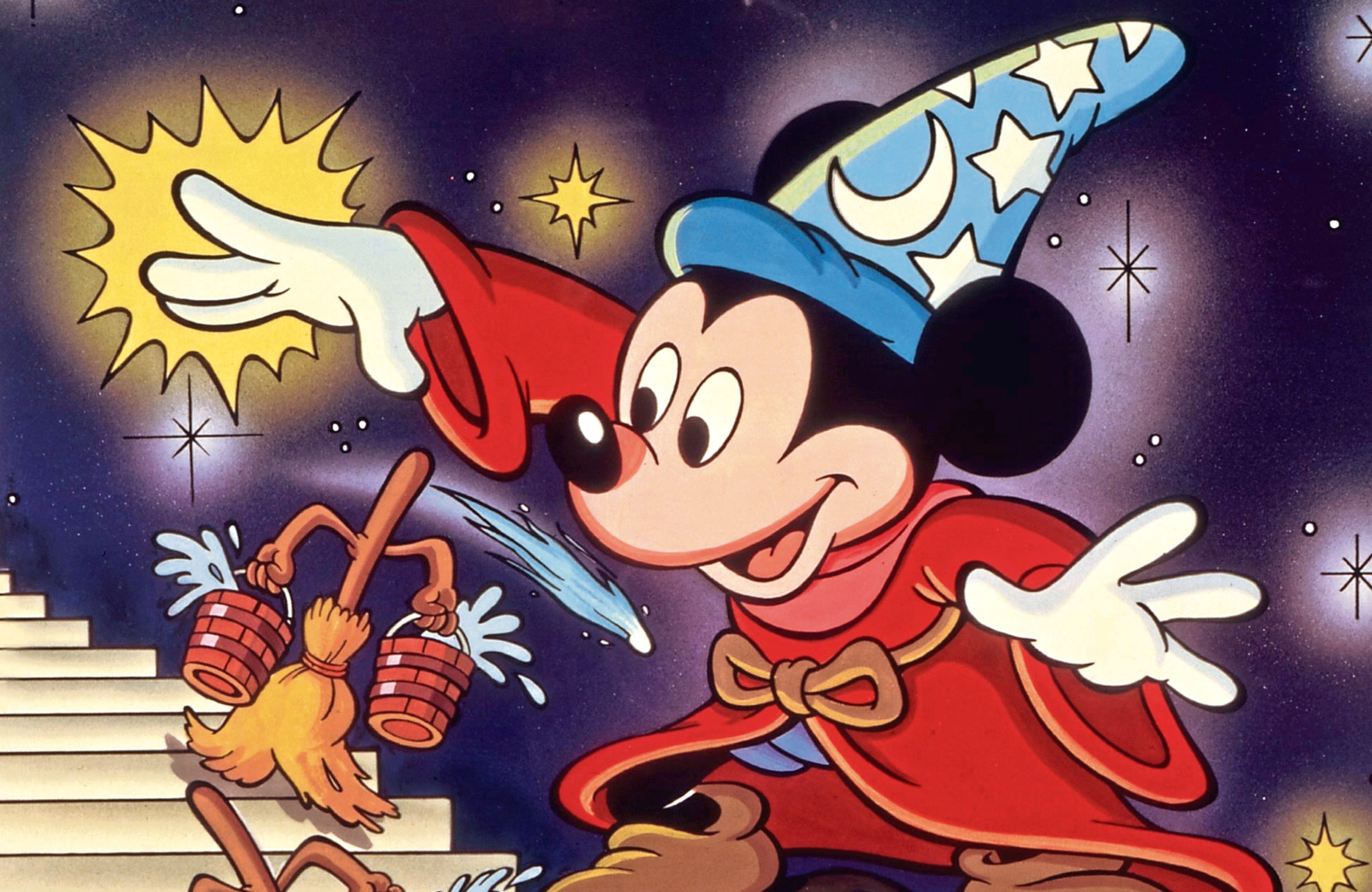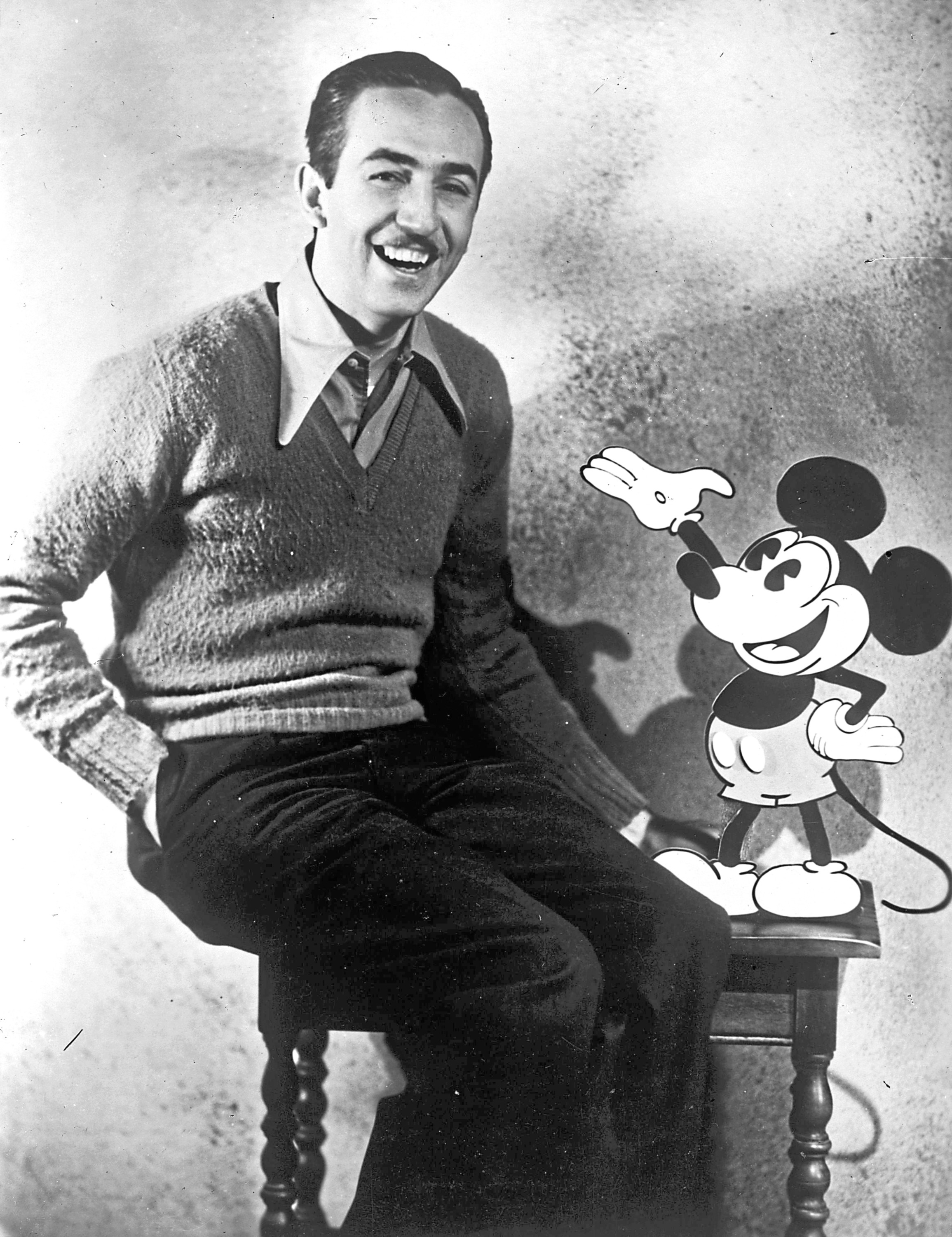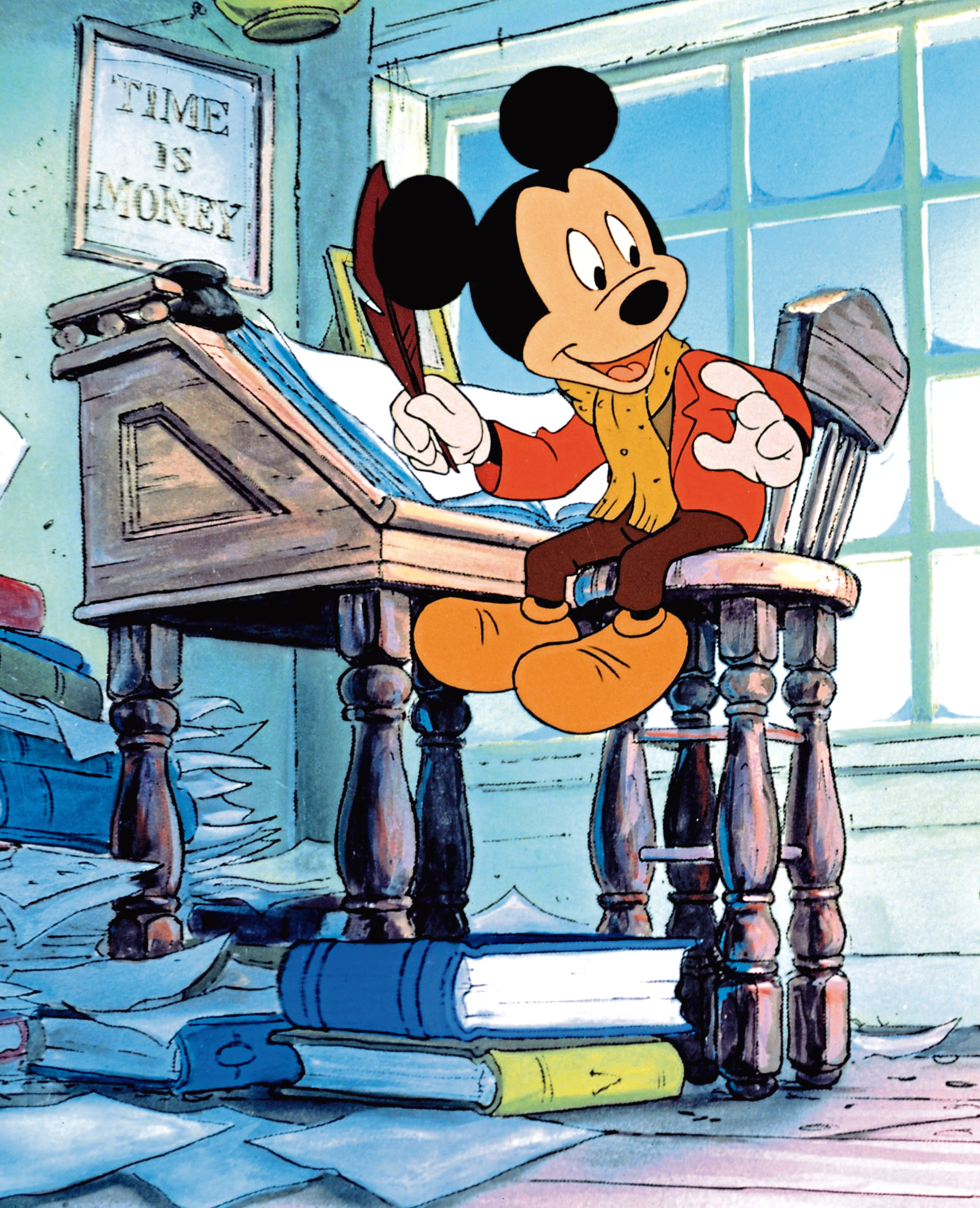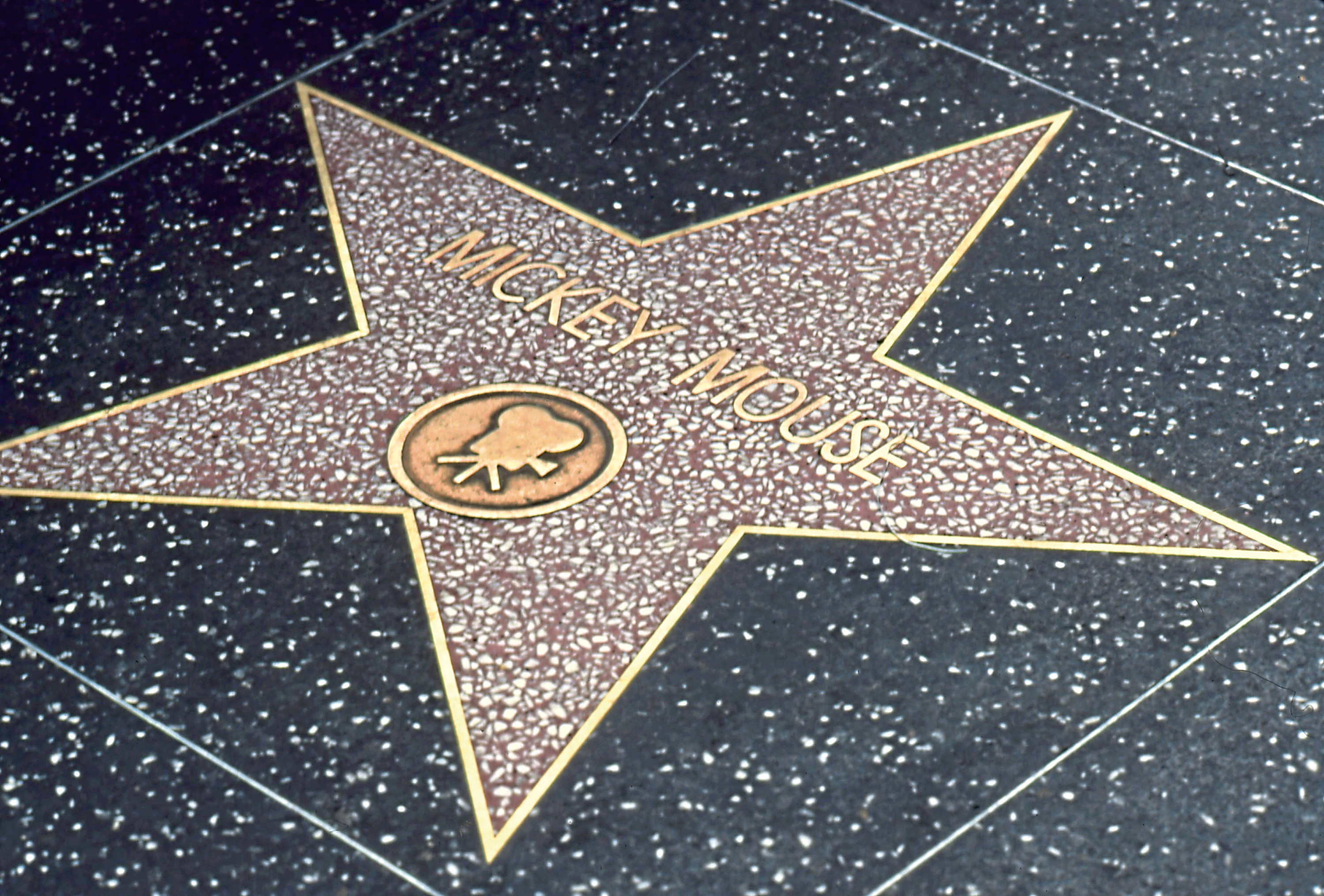
NORMALLY, if a 90-year-old pranced about naked save for red shorts, big yellow shoes and a pair of white gloves, it wouldn’t be a cause for celebration.
But when the nonagenarian in question is Mickey Mouse, it’s a different ball game.
One of the world’s most instantly recognisable characters, Mickey is so important to the Walt Disney Company, the silhouette of his head and ears has become an alternative corporate logo and they plaster it on everything from lunch boxes to movie studios.
As ol’ Walt himself said: “I only hope that we never lose sight of one thing – that it was all started by a mouse.”
Mickey made his debut in Steamboat Willie on November 18 1928, but had things gone to plan, we wouldn’t have been talking of Disney as the “House of Mouse”.
You see, Mickey was hastily created as a replacement for Disney’s previous lead character, Oswald The Lucky Rabbit.
Snappy name, no?
And he certainly wasn’t lucky for Walt Disney, who’d created him for Charles Mintz, a film producer who distributed his animations through Universal Studios.
With the series going strong, Walt asked for a bigger budget, but was stunned when Mintz demanded he take a 20% cut, and reminded him that Universal owned the character and that he’d already signed most of his staff to the new contract.
Dismayed at the betrayal, Walt was determined to start from scratch, and asked Ub Iwerks, one of the few employees to stay loyal, to start drawing up new character ideas.
Walt had kept a tame mouse at his desk when he worked for Laugh-O-Gram Studio in Kansas City and, in 1925, animator Hugh Harman had drawn some mice around a photo of Walt.
These inspired Iwerks to create a new mouse for Disney, so Mortimer Mouse was born – at least, he was until Walt’s wife persuaded him to name him Mickey.
Mickey Rooney used to claim that he’d met Disney at the Warner Bros studio, and that he’d been inspired to name the mouse after him, but this was later debunked.
You’ve probably noticed that Mickey only has three fingers and a thumb on each hand, and this was both an artistic and a financial decision.
As Disney explained: “Five digits are too many for a mouse, his hand would look like a bunch of bananas.
“Financially, not having an extra finger in each of 45,000 drawings that make up a six-and-a-half- minute short has saved the studio millions.”
Mickey was given his white gloves the following year as a way of contrasting his black hands with his body, but it’s proven to be controversial, with some claiming they were taken from blackface caricatures used in minstrel shows.
While Steamboat Willie was actually the third cartoon to feature Mickey, neither Plane Crazy nor The Gallopin’ Gaucho found a distributor, so the company views its premiere as their mascot’s official “birthday”.
It was a parody of the Buster Keaton silent comedy Steamboat Bill, Jr. and it wasn’t just historic because Mickey made his debut, it was also the first cartoon to have a synchronised soundtrack because Disney wanted to cash in on the new trend for “talkies”.
That said, his mouse didn’t utter his first words until the following year’s The Karnival Kid, when he shouted: “Hot dogs! Hot dogs!”, the famous shy, falsetto voice being supplied by Walt himself, who’d also voice Minnie Mouse.
Speaking of whom, in his early days, Mickey wasn’t the nice-guy everyman – he was, in fact, the mischievous anti-hero who was usually an ineffective suitor to Minnie.
One of the early shorts When The Cat’s Away was unusual in that the pair were depicted as being the size of regular rodents.
When in their own world, they’re shown as human height, but when appearing with human characters, they’re shown to be smaller.
That is one of the reasons kids are often freaked out by meeting Mickey at Disneyworld – they just don’t expect him to be that big.
By the mid-30s, largely as a result of The Mickey Mouse Club, Mickey had developed into a role model for children, which meant the writers had to tame him a bit.
As a result, he started to take more of a secondary role in some of Disney’s films, and in 1934, he first appeared with a bad-tempered duck named Donald, who quickly became an audience favourite.
All the characters in what’s unofficially known as the Mickey Mouse Universe were soon introduced, including Pluto, his pet dog, Goofy his dog pal – though I’ve never understood how that works, to be honest – Clarabelle Cow, Horace Horsecollar, Daisy Duck and, my own personal favourite, Scrooge McDuck.
And every hero needs a nemesis which in this instance is Pete, a tubby black cat often seen wearing a small bowler hat and smoking a stogie.
They all live in what, since 1990, has been called Mouseton, which is next to, believe it or not, Duckburg.
To Disney’s consternation, the manic Donald Duck quickly proved more popular than the more passive mouse, so the studio “tweaked” Mickey, and the height of his popularity came in 1940’s Fantasia, his first feature-length movie.
Mickey’s role as The Sorcerer’s Apprentice, when he dons the magician’s hat and brings brooms to life to clean up with disastrous consequences, is the most famous sequence.
After that, the mouse fell away. The last regular instalment of his film series was The Simple Things in 1953, but things changed when Mickey was reinvented as a TV star in the mid-50s in The Mickey Mouse Club.
When this was relaunched in 1989, it gave the likes of Britney Spears and Christina Aguilera their showbiz break.
Hollywood heart-throb Ryan Gosling also made his name here.
Films became rarer, though many people have fond feelings for Mickey’s Christmas Carol from 1983, in which he played Bob Cratchit – though I think Kermit the Frog’s performance in A Muppet Christmas Carol is far superior.
Maybe that’s why Disney bought the Muppets in 2004.
Through the decades, Mickey has battled Warner’s Bugs Bunny in the popularity stakes, and in 1988, the two finally shared screen time in Who Framed Roger Rabbit?.
Not wanting the other to get the upper hand, Disney and Warner signed a contract stating each would get equal screen time.
But Mickey’s huge business away from the big and small screens.
He’s appeared in newspaper cartoon strips since 1930 and his comic books are bestsellers in Europe, especially in Italy, where he’s known as Topolino.
But not everyone was a fan.
In 1930, German censors banned Mickey because of The Barnyard Battle, in which the kepi-wearing mouse fights cat foes in Germanic helmets.
And once Hitler was in power, a newspaper described him as “dirty and filth-covered vermin, the greatest bacteria-carrier in the animal kingdom” before thundering: “Down with Mickey Mouse! Wear the Swastika cross!”
No wonder he was one of the most popular characters to be painted on American bombers during the war.
Happy 90th birthday, Mickey!


Enjoy the convenience of having The Sunday Post delivered as a digital ePaper straight to your smartphone, tablet or computer.
Subscribe for only £5.49 a month and enjoy all the benefits of the printed paper as a digital replica.
Subscribe

